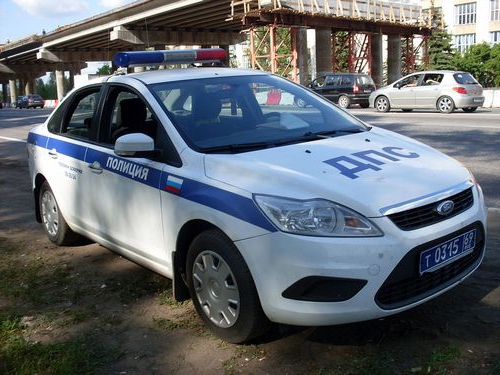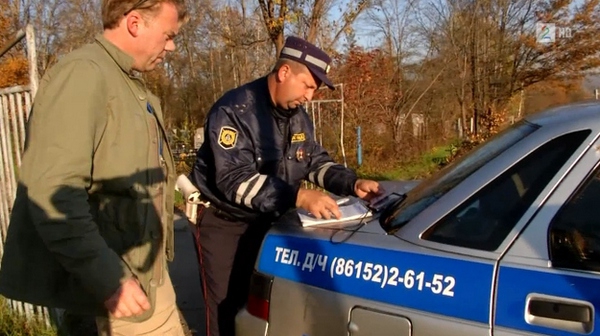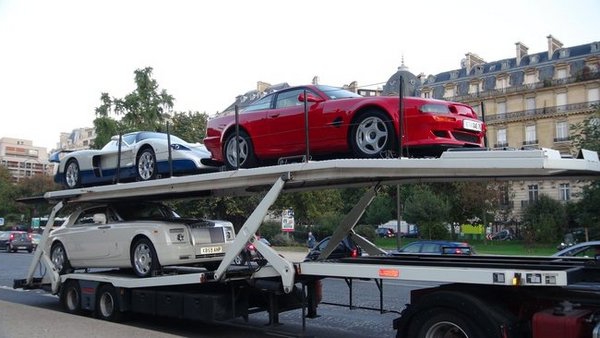The new rules of the road provide for two measures to ensure the production of administrative crimes. The procedure for their implementation is enshrined in the Code of Administrative Offenses, Art. 27.13. Failure to comply with traffic rules (violation, improper execution of regulations) is fraught with various adverse consequences for drivers. Let's consider some of them. 
Normative base of traffic rules
Violation of an administrative nature entails the forced cessation of car operation. This measure may include placing the car in a specialized parking lot. Vehicles are sent to a specially designated place if it is not possible to eliminate its causes at the crime scene. Accordingly, the operation of the machines also ceases.
The main reasons for applying coercive measures
The new rules of the road impose rather stringent requirements on the technical condition of cars and the availability of documents. Often, it is the malfunctions of the machine and the lack of the necessary papers that become the reasons for the forced termination of operation. So, a vehicle is detained in the following cases:
- Management of a person who does not have with him the relevant documents authorizing driving, registration papers for the car or confirming that the car belongs to him, as well as certificates authorizing the use and disposal of it. In Art. 12.3, part 1, it is also provided that the detention of a vehicle may be carried out if the operation is carried out in the absence of the owner.
- Driving a car with obviously defective steering gear, coupling device, brake system (except for the parking brake). This provision is contained in Art. 12.5.
- Driving a vehicle by a person who is not entitled to it (except for driving lessons) or is deprived of them. This provides for Art. 12.7, part 1, 2.
- Driving while intoxicated. This provision is established in Art. 12.8, part 1.
- Failure to comply with the rules of parking or stopping the car on the roadway, which led to the formation of obstacles to the movement of other cars, as well as stopping the car in the tunnel. This provision is spelled out in Art. 12.19, part 4.
- Failure to comply with the requirements of a traffic police officer for a medical examination. This provision is enshrined in Art. 12.26.

Prohibition of operation
This coercive measure is used if there is:
- Violation of the safety of health and life of citizens.
- Threat to property safety.
- Environmental damage.
- Driving a vehicle that has not undergone a technical inspection.
- Violation of the operating standards of self-propelled road-building and other machines, tractors, trailers, equipment, the state of which is supervised by authorized supervisory authorities.
A full list of cases is contained in the Code of Administrative Offenses.
General order
A vehicle may be stopped by a traffic police officer in cases established by law. When identifying signs of an administrative offense under Article. 12.1, 9.3 (except for driving a vehicle that has not been registered), Article 12.5, Part 2, prohibits further operation of the machine. In this case, the registration marks are subject to removal until the reasons on the basis of which the vehicle was detained have been eliminated.
Fixing violation
Forced shutdown of the machine is carried out by authorized officials. It is their responsibility to draw up a protocol on the fact of an administrative violation. The document shall indicate:
- Grounds, place, date of the decision to apply coercive measures.
- Initials, last name, special rank, position of the person who compiled the protocol on the detention of the vehicle.
- Information about the car and the citizen in relation to which this measure was applied.
- Name and position of the person who will implement the decision.

Features of the preparation of documents
The detention of a vehicle, the prohibition of its operation should be documented. A note is made of these activities. The record can be entered into the existing protocol on an administrative offense, or a separate paper is drawn up for this. A copy of the document is handed over to the citizen in respect of whom this coercive measure was applied. In the absence of a driver on the spot, the protocol is drawn up in the presence of two witnesses. The document is signed by the official who executed it, by the witnesses, as well as by the citizen in respect of whom the coercive measure is applied. The owner has some rights when detaining a car. In particular, he may not sign the document. In case of refusal to certify the paper, an official record is made in it. If vehicles are sent to a specialized parking lot, copies of documents are also given to persons responsible for the safety of the car.
Official actions
Current legislation provides for citizens responsible for violation of traffic rules. Along with this, normative acts contain prescriptions for officials. In particular, the law provides for the detention of a vehicle:
- The person who is transporting the detained car seals the places of access to the car provided for in the design.
- Forced shutdown is documented in the manner described above.
- The driver responsible for the violation of the SDA is informed of the place where his car was sent for storage at the time of delivery of the paper on the fact of violation.
- The period during which the operation of the vehicle is prohibited is calculated from the date of registration of the relevant document.

Features of car storage
The law provides for the following:
- The time spent in the parking lot is expressed in hours. It starts from the moment the vehicle is stored.
- The first three hours in a specialized parking lot are not paid by the driver.
- Payment for direct transportation and storage of more than three hours is charged in the amount determined by the executive body of the subject of the Russian Federation.
Car issuance
Access of the owner (his representative or driver) to the car stored in a specialized parking lot is carried out in the presence of a person authorized to ensure proper maintenance of the car. If the reasons for stopping the vehicle and its subsequent temporary withdrawal were eliminated, the authorized employee gives written permission to issue it. This action should be recorded in the relevant document. This may be a protocol of violation or detention of the car. The car is issued to the owner (his representative or driver) after payment of all expenses that were associated with moving the car to the parking lot and its subsequent storage.
Keeping the machine in storage
The responsible person keeps a record of incoming cars at a specialized parking lot.Compensation for damage caused to the car and property located in it in the process of moving to the place of storage is carried out in accordance with the legislation of the Russian Federation. Compensation for damage to the traffic police officer is appointed in case of the commission of illegal actions in the process of fulfilling his duties. Moving to the car parking is carried out using another car (tow truck). 
Important point
The fact of detention of the vehicle in the absence of the owner (his representative or driver) must be reported to the duty department of the local ATS. The operational employee, in turn, informs the owner (his representative) about what happened. If necessary, the official shall take measures to establish the owner of the vehicle.
Actions after eliminating the reasons for the prohibition of operation
From the parking lot, the car is issued, as mentioned above, by written permission of the authorized person. After eliminating the reasons in accordance with which the vehicle was detained, it is allowed for further operation. The owner (his representative or driver) will be returned registration marks. The reasons for the detention can be eliminated directly at the place of their detection.
In particular, the owner (his representative or driver) can provide documents that are provided for in regulatory enactments, eliminate malfunctions of the coupling device, steering gear or brake system, drive the car to a parking place permitted, provide another person to drive the car in the absence of any reasons for removing him from driving. If these and similar actions are performed before the machine moves to a specialized parking lot, its transportation to the storage place is not performed. 
Required documents for the driver
Driving a car that is not property is carried out on the basis of a power of attorney. It is drawn up by the owner of the vehicle. A power of attorney issued in another state is valid in Russia. However, it must be translated into the state language, certified by a notary and legalized. A citizen driving a car must have the following package of documents:
- Driving license, upon its withdrawal - a temporary permit, as well as an identity card.
- Power of attorney for the right to use the machine, if it is not property.
- Registration documentation for the car.
- CTP insurance policy.
Special cases
The traffic police officer can check if the car is wanted. If this fact is revealed, he is obliged to report it to the duty unit. There, the issue of the direction of the investigative team to the vehicle, the delivery of the detainee and the car to the location of the police department is solved.
additional information
Driving a detained car may be carried out by an official in the event that there is no other vehicle with which to move. When a car is temporarily seized by an employee, a report is drawn up. It indicates the circumstances and grounds for the detention. The report is handed over to the senior officer from the investigative-operational group. A copy of the document with a mark of receipt is transmitted to the head of the unit. 
Recommendations for citizens
When detaining a vehicle, first of all, it is necessary to carefully read the drawn up protocol. In particular, the document should contain information about the real technical condition of the machine, the absence of mechanical damage, dents and other things. In addition to the protocol, an inventory of the property in the car must be made. A citizen has the right not to give the car keys to an official. Nobody can force them to withdraw. A citizen may require that his car be moved to a specialized parking lot with a tow truck.
Drivers often use this right, since an official can cause damage to the car, and proving something later will be problematic. A citizen may also require the driver of a tow truck to present documents allowing him to move cars. It is more advisable to pick up all things from the inside of the car before it is sent to a specialized parking lot. When sealing structurally provided access areas on each seal, in addition to the signature of the traffic police officer, there must be a signature and the owner (his representative or driver). This is necessary to prevent the opening of seals by third parties or directly by the official. The structurally provided areas include the gas tank cover, hood, sunroof, trunk, doors.






